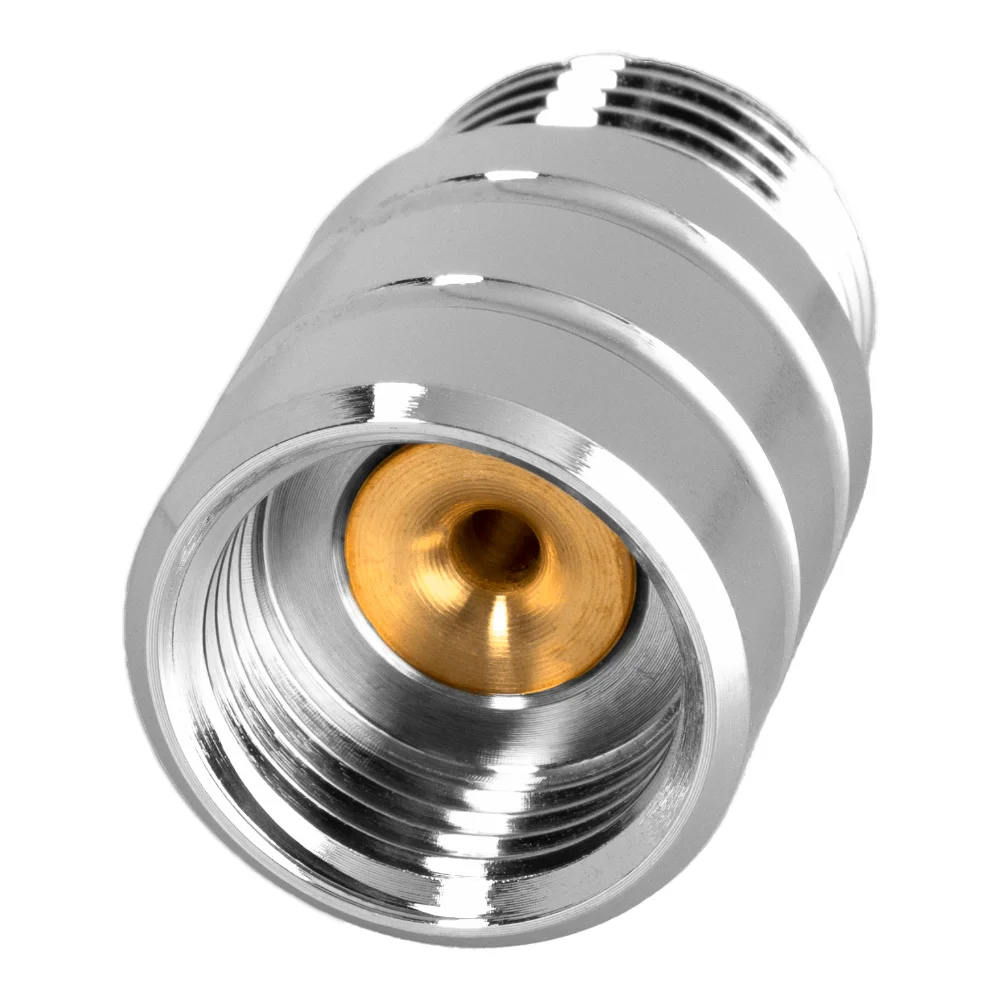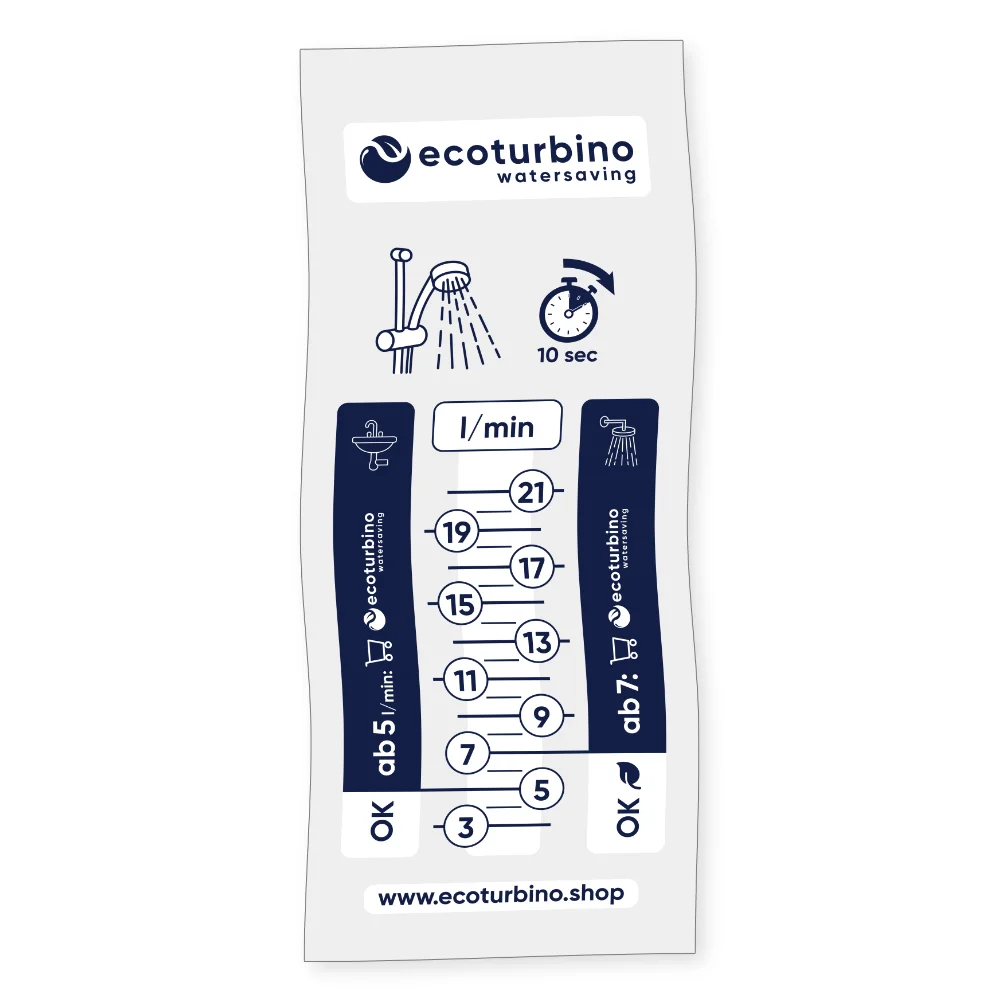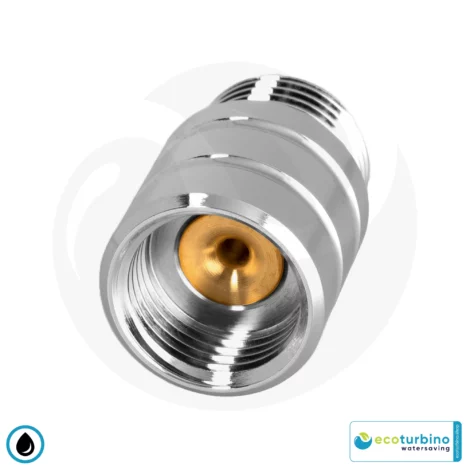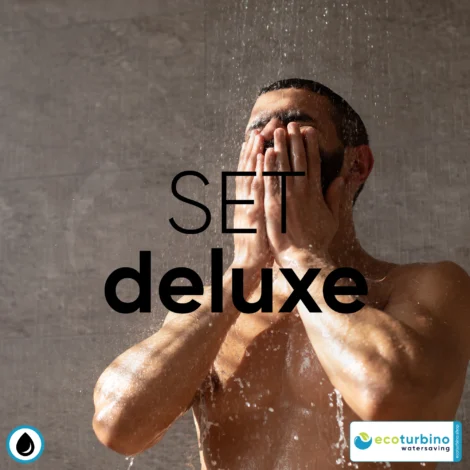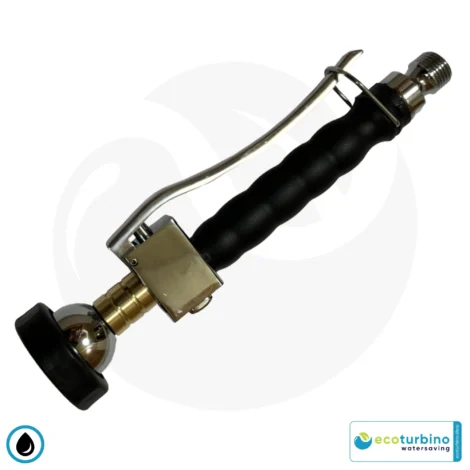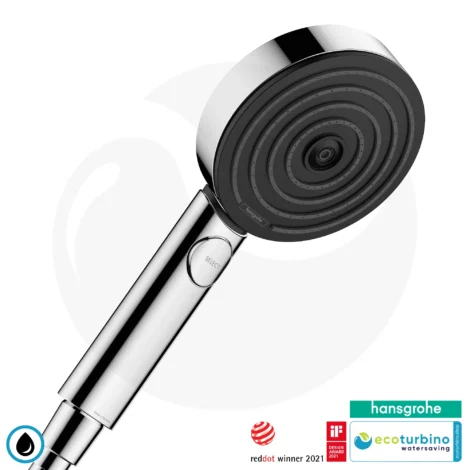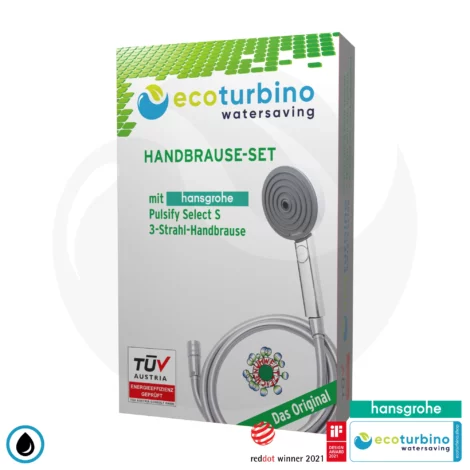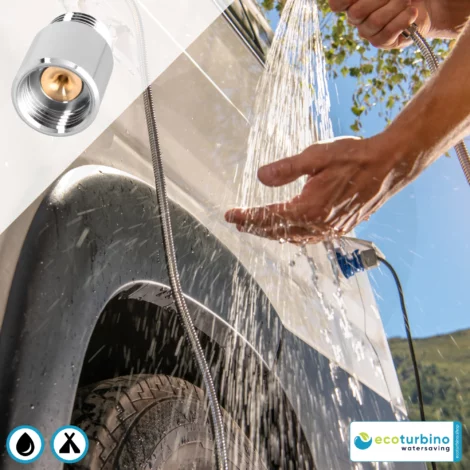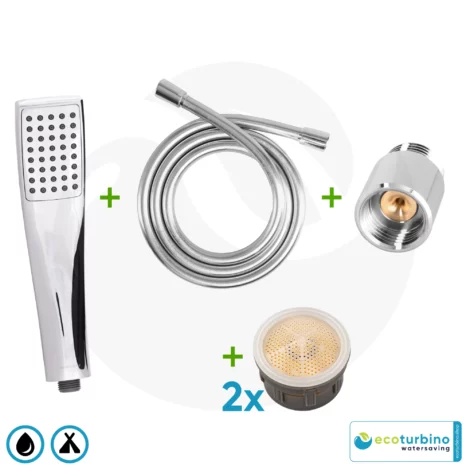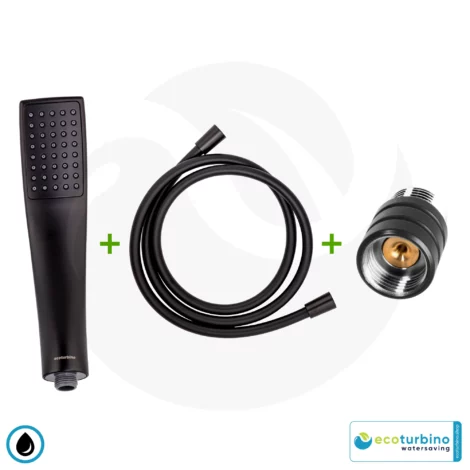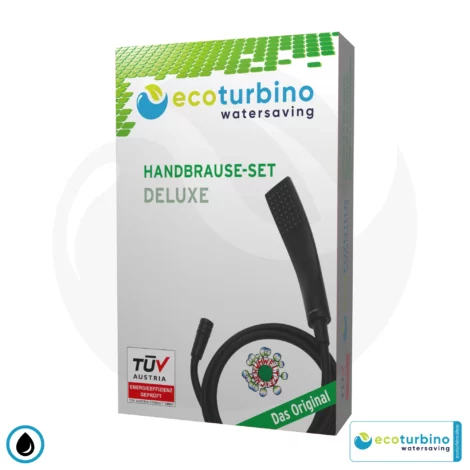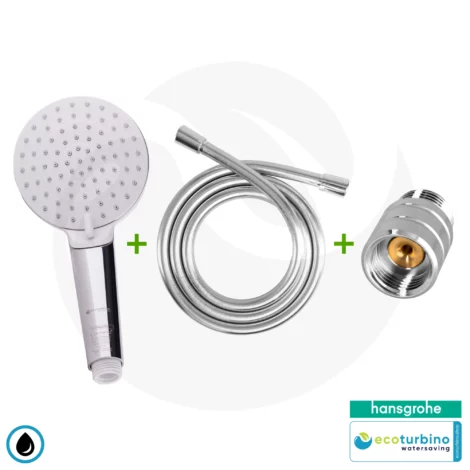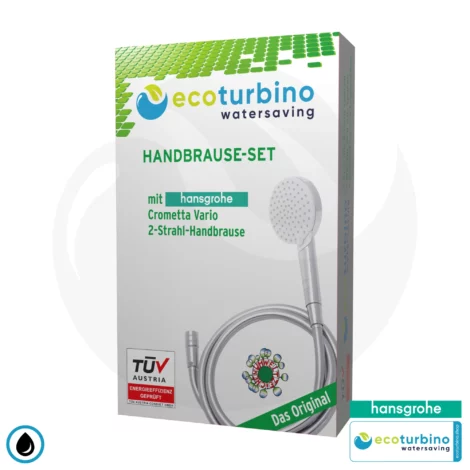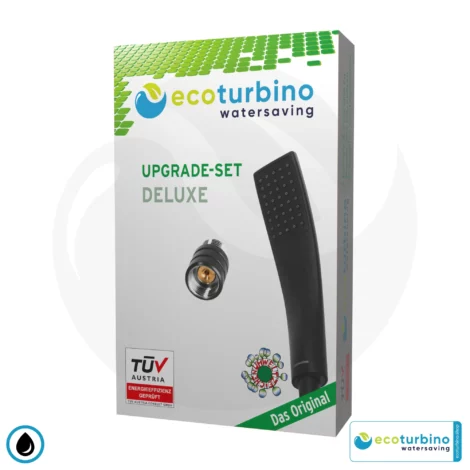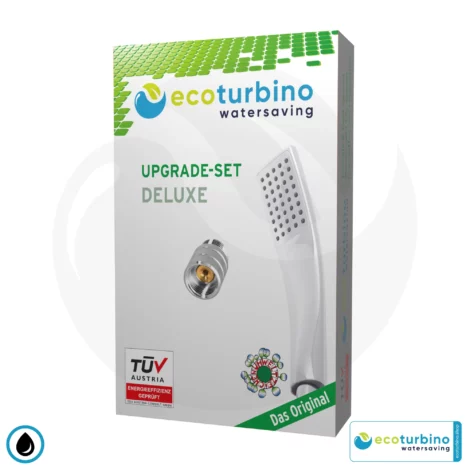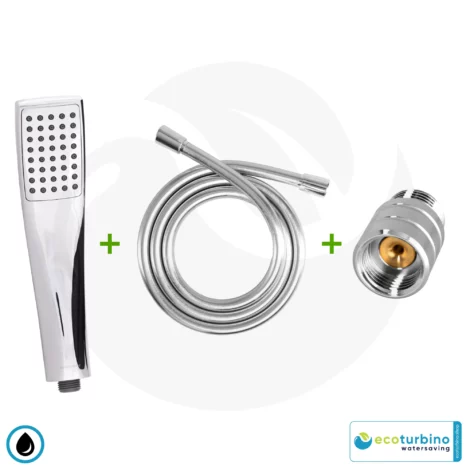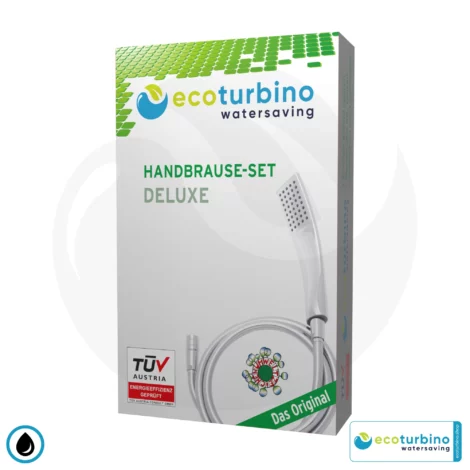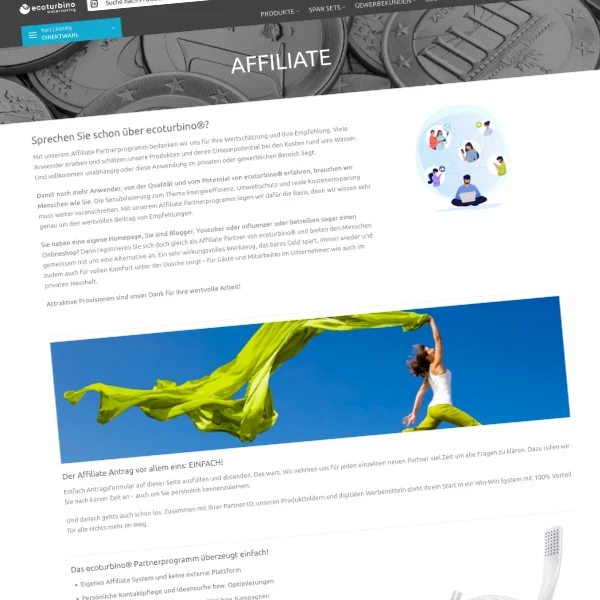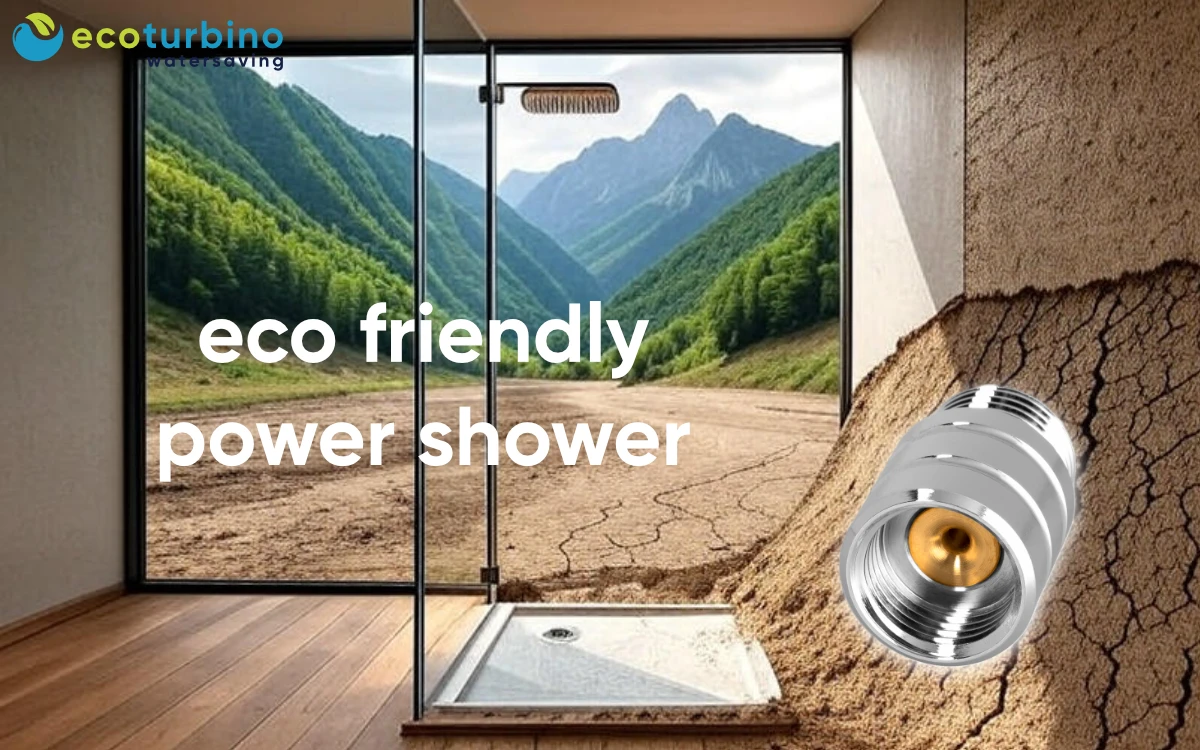Blog
Climate change in the Alps: Water scarcity and how ecoturbino can help conserve water reservoirs
Climate Change in the Alps: Water Scarcity and Drought | How ecoturbino Can Help Reduce Shower Water Consumption and Conserve Water Reservoirs
The Alps, often referred to as the “water towers of Europe,” are invaluable for the water supply of millions of people.
However, climate change is dramatically altering this region. Rising temperatures are leading to increased evaporation, melting glaciers, and reduced snow cover, which endangers the water supply in the Alpine regions. Karte Alpine Drought Observatory map effectively illustrates the situation across the Alps.
Droughts and water shortages are becoming increasingly frequent, affecting not only the environment but also local communities, agriculture, and the tourism industry.
In this blog post, we take a look at the impacts of climate change in the Alps, particularly focusing on evaporation, snowmelt, drought, and water scarcity. We also demonstrate how innovative solutions like ecoturbino can help conserve these precious water resources.
Hotels in South Tyrol have already recognized the importance of water conservation and are successfully using ecoturbino to responsibly manage water as a resource.
Climate Change in the Alps: The Situation in 2025
The Alps are a sensitive ecosystem heavily impacted by climate change.
According to recent reports, the glacier mass in the Alps has more than halved since 1931, and the decline is accelerating.
A March 2025 report from the United Nations Environment Programme Finance Initiative (UNEPFI) warns that glacier melt could cause $4 trillion in global economic damage by 2050, with regions like the European Alps being particularly affected (UNEPFI World Water Day 2025).
Glaciers and snowfields serve as natural water reservoirs, slowly melting in the summer to feed rivers.
However, climate change is causing them to melt faster, and snow cover is decreasing, leading to reduced water availability, especially in the summer months when demand is highest.
Additionally, rising temperatures are causing increased evaporation, further exacerbating water scarcity. A 2008 study by the German Environment Agency, still relevant in 2025, already showed that water distribution in the Alpine regions is becoming uneven, with areas like South Tyrol increasingly struggling with drought (Umweltbundesamt).
The consequences are far-reaching: agriculture, energy production, and tourism are at risk. For example, a study suggests that winter tourism could suffer a $30 billion decline by 2050 as snow cover decreases and the ski season shortens.
Impacts on Water Supply
The Alps provide about 40% of Europe’s freshwater, but changes in snow and glacier dynamics are leading to temporary water shortages.
A 2022 report from the European Commission emphasizes that more frequent droughts and rising water temperatures are affecting water quality and reducing the availability of drinking water (European Commission).
This affects not only the Alpine regions themselves but also the lower-lying areas that depend on Alpine rivers.
Water Scarcity in the Alps: Causes and Effects
Water scarcity in the Alps is no longer a future scenario but a present reality.
Droughts are becoming more frequent, and water levels in rivers and lakes are dropping. In 2022, several regions in the Alps experienced severe drought periods, leading to restrictions on water use for agriculture and industry.
Climate change is intensifying this issue, as higher temperatures accelerate evaporation and alter snowmelt patterns.
A 2023 UNICEF report projects that by 2025, 1.8 billion people worldwide could be living in areas of absolute water scarcity, and the Alps are no exception (UNICEF Water Scarcity).
The effects are diverse:
- Local Communities: Reduced access to drinking water and higher costs for water treatment.
- Agriculture: Lower yields and higher irrigation costs.
- Tourism: Shorter ski seasons and economic losses due to declining snow levels.
- Ecosystems: Altered water flows threaten biodiversity and the stability of the Alpine environment.
Regions like South Tyrol, where the tourism industry relies heavily on water resources, are particularly at risk. Hotels and other establishments must adapt to conserve water and operate sustainably.
Explanation of the Phenomenon of Snow Evaporation – No Meltwater
The phenomenon often referred to as “snow evaporation” is scientifically known as sublimation. Sublimation is a physical process in which a solid directly transitions into the gaseous phase without passing through the liquid phase.
In the case of snow, this means it directly converts into water vapor without first melting into liquid water (meltwater).
This process is particularly significant in cold, dry environments like the Alps or polar regions and has substantial impacts on the water balance and the environment.
Scientific Definition and Process
Sublimation describes the direct transition of a substance from the solid to the gaseous phase without becoming liquid. For snow, which consists of ice crystals, this means it directly turns into water vapor. This differs from:
- Melting: Where snow is converted into liquid water, which may later evaporate.
- Evaporation: Where liquid water transitions into water vapor, which is not directly applicable to snow as a solid.
Since snow is a solid, it cannot evaporate but can only sublimate.
The term “snow evaporation” is commonly used in everyday language, but scientifically, this process is precisely called sublimation.
Conditions that Favor Sublimation
Research shows that snow sublimation is strongly influenced by environmental conditions, particularly temperature and humidity:
- Temperature: Sublimation typically occurs when temperatures are below 0°C to prevent snow from melting. Studies indicate that it can also occur at slightly higher temperatures, up to +7°C, if the air is extremely dry. For example, snow sublimates at a relative humidity of 50% below +3.5°C, as described in meteorological analyses.
- Humidity: The air must not be saturated with water vapor, meaning relative humidity must be below 100%. The drier the air, the more likely sublimation is to occur. At very low relative humidity (below 20%), sublimation can persist even at higher temperatures, as dry air can absorb more moisture from the snow.
- Wet-Bulb Temperature: A key indicator is the wet-bulb temperature, which measures the temperature of a thermometer covered with a wet cloth. If this is below 0°C, sublimation is favored, keeping the snow dry and preventing melting, as explained by the German Weather Service.
- Energy Input: Sublimation requires energy, often provided by solar radiation or heat conduction. This process requires more energy than melting alone, as it involves both latent heat of melting and evaporation, which cools the remaining snow and slows the process, as described in scientific literature.
Why is There No Meltwater?
The absence of meltwater is a direct result of sublimation, as the liquid phase is bypassed. Unlike melting, where snow is converted into liquid water that can later evaporate, sublimation transforms snow directly into water vapor.
This is evident in scenarios where snow disappears on sunny, cold days without leaving puddles, as the dry air absorbs the resulting water vapor, as described in meteorological studies.
Detailed Environmental Conditions and Examples
- Alpine Regions: In the Alps, where the air is often dry and temperatures are low, sublimation is a significant factor in the loss of snow cover. This affects hydrological cycles by reducing the amount of meltwater available for rivers and lakes, which is critical for water supply in these areas.
- Polar Regions: In places like Antarctica or Greenland, sublimation is a primary mechanism for the loss of snow and ice due to the extremely dry and cold conditions, further emphasizing its role in global water dynamics.
- Daily Observations: Observers might notice that snow disappears on dry, sunny winter days, even when temperatures remain below freezing. This is driven by solar radiation, which provides the energy for sublimation, with the dry air absorbing the resulting water vapor, as described in meteorological studies.
Comparative Analysis: Sublimation vs. Melting and Evaporation
To clarify the difference:
- Melting: Involves converting snow into liquid water (meltwater), which can later evaporate. This process occurs when temperatures are above 0°C and moisture conditions allow.
- Evaporation: Refers to the transition from liquid to gas, which is not directly applicable to snow as a solid but is relevant after melting has occurred.
- Sublimation: Snow transitions directly from solid to gas without needing a liquid phase. This process is slower and more energy-intensive, cooling the remaining snow, as described in detailed weather analyses.
Table: Conditions for Snow Loss Processes
| Process | Temperature Range | Relative Humidity | Result |
|---|---|---|---|
| Sublimation | Below 0°C, up to +7°C (dry) | Below 100%, often <20% | Directly to vapor, no meltwater |
| Melting | Above 0°C | Variable | Produces liquid water (meltwater) |
| Evaporation | Above 0°C (after melting) | Variable | Liquid to vapor, requires meltwater first |
This table highlights the distinct conditions and outcomes, emphasizing the unique role of sublimation in snow loss without meltwater.
Implications and Relevance
The implications of sublimation extend beyond mere observation:
- Hydrological Impacts: In regions like the Alps, sublimation reduces the contribution to water resources, as less snow melts into rivers, affecting agriculture and tourism, particularly ski resorts.
- Climate Change: Rising temperatures and drying trends can enhance sublimation, further stressing water resources, as described in environmental studies.
- Scientific Interest: Understanding sublimation is crucial for modeling snow cover dynamics and predicting water availability, especially in a changing climate, as discussed in meteorological research.
Conclusion
The evaporation of snow without meltwater is a fascinating and significant phenomenon explained by the process of sublimation. Snow is directly converted into water vapor under cold, dry conditions without producing liquid water.
This process is driven by low humidity, specific temperature ranges, and energy input, and has notable impacts in alpine and polar regions.
Although slower than melting, this phenomenon plays a critical role in environmental and hydrological systems, making it essential for scientific studies and practical water management.
Interesting Further Reading:
Economic Consequences
The economic impacts of water scarcity are significant. The decline in snow cover leads to shorter ski seasons, affecting winter tourism.
According to a study, the Alps could face an annual loss of $30 billion in tourism by 2050.
Additionally, agricultural operations are forced to use expensive irrigation systems, increasing production costs and driving up food prices.
ecoturbino: A Solution for Sustainable Water Conservation
In this context, ecoturbino offers an innovative and effective solution for water conservation. ecoturbino is a small retrofit adapter installed in showers between the mixer tap and the shower hose.
It uses static turbine technology to mix water with air, creating a powerful shower stream that consumes up to 40 to 50% less water without compromising comfort.
This technology not only saves water but also energy, as less water needs to be heated.
ecoturbino is easy to install and can be retrofitted to existing shower systems, making it a practical choice for households and commercial establishments.
The benefits of ecoturbino are clear:
- Water Savings: Up to 40% less water consumption per shower.
- Energy Savings: Less water means less energy required for heating.
- Comfort: The shower stream remains strong and pleasant.
- Eco-Friendly: Reduced water consumption conserves natural resources.
ecoturbino is certified by TÜV Austria, confirming its reliability and effectiveness.
How Does ecoturbino Work?
ecoturbino uses a small Venturi turbine that combines water and air in a central mixing chamber. The flow dynamics drive the static turbine, which releases the mixture with high intensity.
The adapter is made from high-quality, non-corroding metals to ensure a long lifespan and minimize the risk of contamination.
Tests in TÜV laboratories in Austria have shown that ecoturbino does not compromise the water stream intensity during showering, unlike other water-saving devices.
Success Stories: Hotels in South Tyrol with ecoturbino
Many hotels in South Tyrol, one of the most beautiful regions in the Italian Alps, have already recognized the importance of water conservation and are successfully using ecoturbino.
South Tyrol is known for its breathtaking landscapes and thriving tourism, but water is a scarce resource that must be protected. Here are some hotels that are successfully using ecoturbino:
| Hotel Name | Location | Region | Savings |
|---|---|---|---|
| Hubertus Stube Hotel & Restaurant | Laion, Lajen Ried 117 A | Trentino-Alto Adige | Thousands of liters of water annually |
| Ferienidylle Residence Gstrein | Meran, St.-Jakob-Straße 12-14 | Trentino-Alto Adige | Significant cost savings |
| Kristall Hotel | Maranza, Panoramaweg 3 | Trentino-Alto Adige | Positive guest feedback |
| Nives Boutique Hotel | Wolkenstein, Nivesstraße 4 | Trentino-Alto Adige | Sustainability standard |
| Clara Hotel | Vahm, Brennerstr. 64 | Trentino-Alto Adige | Reduced water bills |
| Tratterhof | Rio di Pusteria/Maranza, Via Großberg 6 | Trentino-Alto Adige | Leader in sustainability |
| FAYN Garden Retreat Hotel | Breitofenweg 9 | Trentino-Alto Adige | Luxury and environmental awareness |
| Zum Turm Hotel | Castelrotto, Viale Kofel, 8 | Trentino-Alto Adige | Comfortable water savings |
These hotels demonstrate that it is possible to save water without sacrificing comfort or quality.
Many of them report not only economic benefits but also positive feedback from guests who appreciate the sustainable approach (ecoturbino References).
Example: Hubertus Stube Hotel & Restaurant
The Hubertus Stube Hotel & Restaurant in Laion has installed ecoturbino in all its showers, saving thousands of liters of water annually.
Guests continue to enjoy a powerful shower stream while the hotel reduces its operating costs and contributes to environmental protection. This example shows how ecoturbino combines sustainability and economic efficiency.
The Importance of Water Conservation in the Alps
Water conservation in the Alps is not just a matter of resource management but also a contribution to preserving the ecosystem and quality of life.
The Alps are a delicate balance of glaciers, rivers, and lakes, which is being disrupted by climate change.
By taking measures such as using ecoturbino, we can help ensure that these resources are preserved for future generations.
Everyone – whether as an individual, household, or business – can make a difference by using water more consciously and adopting innovative technologies like ecoturbino.
Ecological Benefits
By reducing water consumption with ecoturbino, not only is water saved, but the carbon footprint is also reduced.
Heating water is a significant energy consumer, and by reducing water usage, less energy is required.
This is particularly important in the Alps, where energy production often relies on hydropower, which can be affected by water scarcity.
Why ecoturbino Makes Sense in Showers
ecoturbino stands out for its unique technology, which allows water to be saved without compromising shower comfort.
Unlike conventional water-saving showerheads that often produce a weak stream, ecoturbino ensures a full, powerful stream.
Installation is straightforward and can be done without specialized knowledge. Additionally, the product is extremely durable and made from high-quality materials, ensuring its longevity.
But ecoturbino offers more than just water savings:
- Cost Savings: Less water and energy mean lower bills.
- Eco-Friendliness: Reduced CO2 footprint through lower energy consumption.
- Sustainability: A contribution to preserving Alpine water resources.
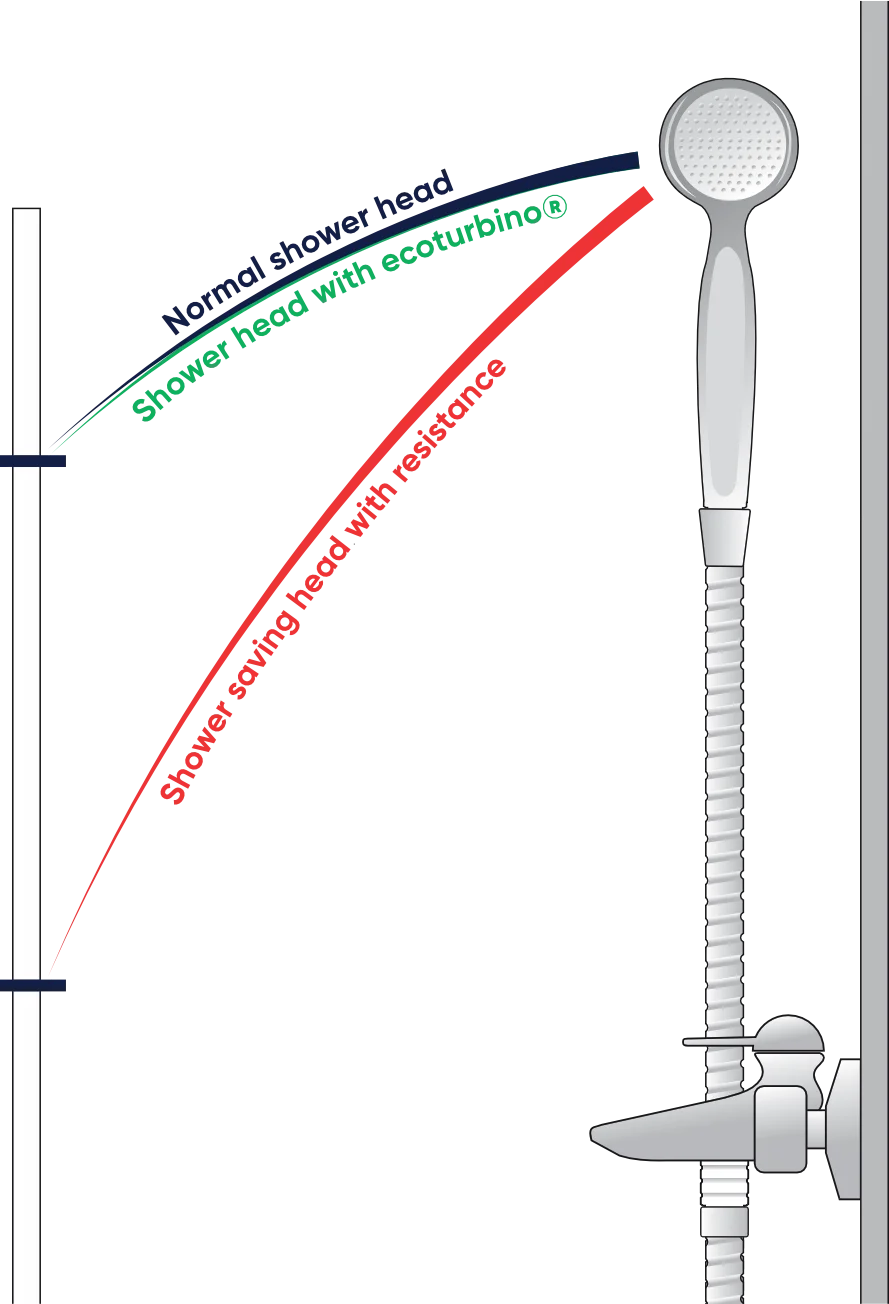
Take Action Now: Order the ecoturbino Deluxe Set
If you are committed to protecting the environment and sustainably using resources, ecoturbino is the ideal choice.
Visit our website ecoturbino Shop to learn more about this innovative product and place your order. Together, we can make a difference and secure the Alps’ water resources for the future.
Summary
Climate change poses enormous challenges to the Alps, particularly regarding water scarcity.
However, with technologies like ecoturbino, we can actively contribute to saving water and protecting the environment. Hotels in South Tyrol have already proven that it is possible to conserve water without sacrificing comfort.
It is up to all of us to handle this precious resource responsibly. Act now and become part of the solution!
- World Water Day 2025: Why Glacier Preservation Matters for Finance
- Global Warming: Water Scarcity in the Alps?
- Consequences of Climate Change
- Water Scarcity | UNICEF
- Fallbeispiele Einsparungen Hotel
- Product Range – Find Your Optimal Water Saving System
- Financial Benefits Ecoturbino
- Water Saving & Resource Saving References
- Hubertus Stube Hotel & Restaurant Referenc
